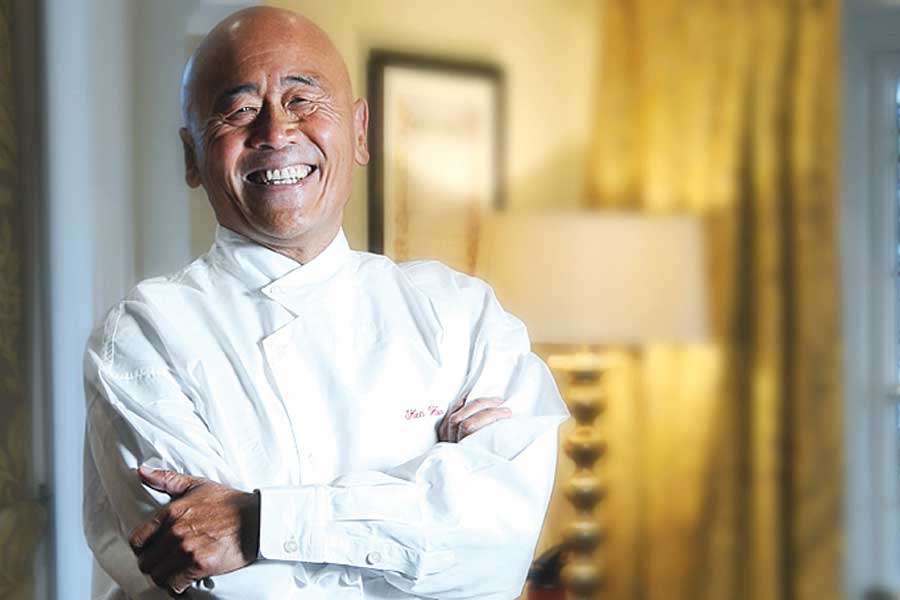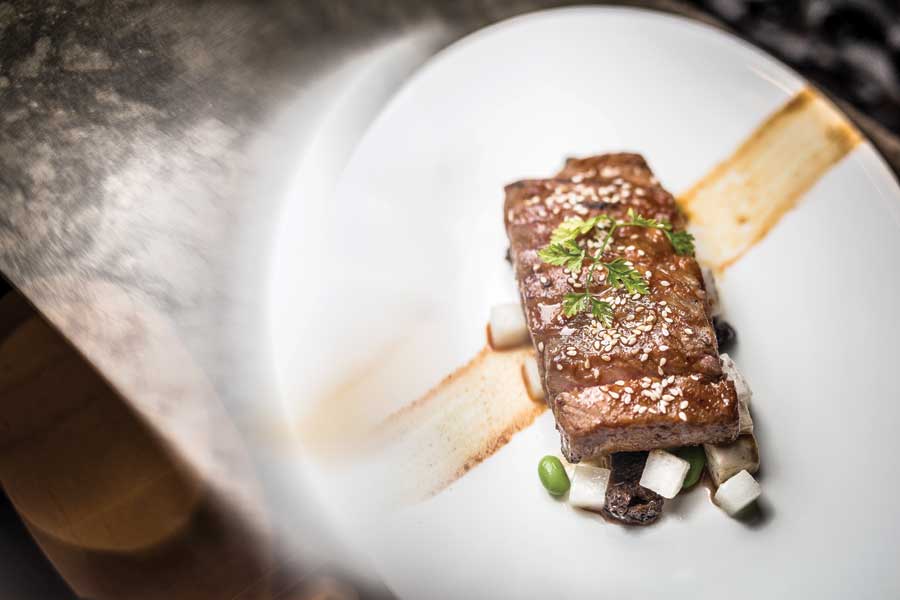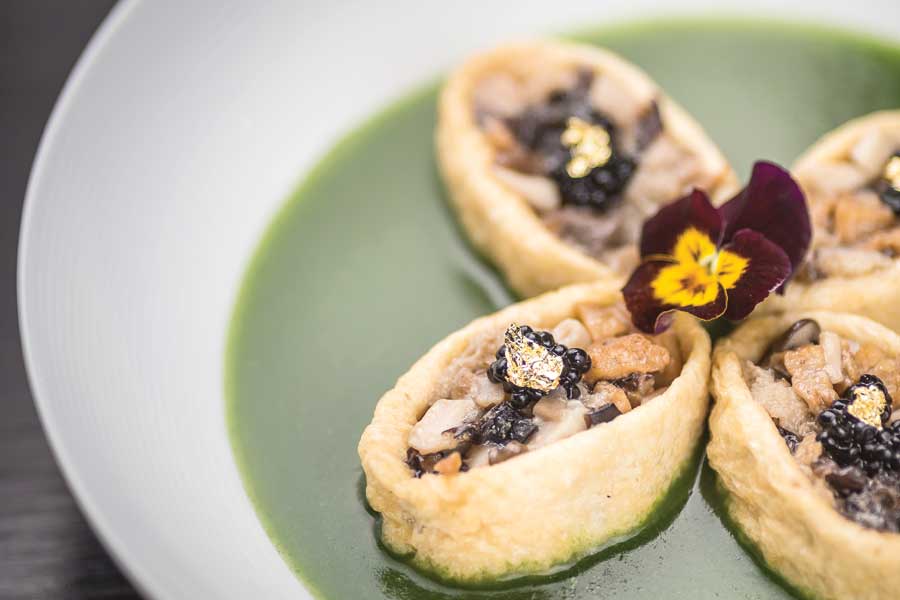Britain's love affair with Chinese food

Dishes have been available in UK capital for more than a century but local tastes are still changing
Cantonese chef William Poon opened his first Poon's Restaurant in 1973, in an 8-square-meter space in Central London's Lisle Street that had been occupied by an electrical supplies shop and that was only big enough for four tables.
Poon's food became so popular, he subsequently opened another six restaurants, with one he opened in 1976 being awarded a Michelin star in 1980 and being named the best Chinese restaurant in London. He sold his business in 2003 and went into retirement.
The immigrant from Hong Kong who arrived in the United Kingdom in 1967 says the secret of his success was his stubbornness, which ensured he preserved traditional cooking methods.
"I am a very stubborn and conservative person," he said. "I always try my best to keep the original taste as much as possible."
Looking back on his time at the forefront of Chinese cuisine in the UK capital, he remembers with pride that he was the first one in London to serve stir-fried beef with a "stinky" shrimp paste. Despite being a popular dish in Hong Kong, his restaurateur peers in Chinatown regarded the move as "crazy" because they assumed it would not be to the liking of Western customers.
But Poon's boldness turned out to be a hit – his dishes were well received by diners, both locals and those with roots in China, and his barbeque pork, char siu, roasted chicken livers, and pig's intestines joined the ranks of the most popular items on his menu.
As his restaurant became more famous, and with people waiting in the pub next door for tables to come free, it became clear his premises was too small to accommodate all those wanting to eat there. Poon's solution was to create set menus, which he believes were the first of their kind in the UK.
"At that time, all the restaurants had very long menus and it was easy for customers got lost," Poon said. "Because my restaurant was so small, I could not afford them to take a long time to read the menu, so I designed different set menus labeled A, B, C, D …That became a trend and other restaurants started to follow."
Around that time, Cantonese cuisine was prospering in London, driven by a sharp increase in the number of immigrants arriving from Hong Kong.

Celebrity TV chef Ken Hom, author of My Stir-Fried Life, said: "The boom in Cantonese food came from the early immigration of Cantonese immigrants, as they were the first to have access to leave a turbulent China racked by poverty and the declination of the imperial China and of course with the advent of Western imperialism."
However, the earliest Chinese eateries in London predate Poon's by a century, says the British Chinese Heritage Centre. They stretch all the way back to the 1880s when stalls sprang up around London's docklands, where Chinese sailors had settled.
The Limehouse area of East London housed the first Chinatown in the British capital but it was the International Health Exhibition in the West London district of South Kensington in 1884 that introduced Chinese food to the British public in a big way, something that was followed in 1908 by the first recorded opening of a formal Chinese restaurant, in Glasshouse Street, Piccadilly Circus, which was appropriately named The Chinese Restaurant.
Similar things were happening in other cities. In Liverpool in the 1930s, ex-Chinese sailors were serving dishes from Ningbo, Fuzhou, Hainan, Shantou, and Shanghai, including chop suey (a mix of meat and vegetables cooked together), fishcakes, and black jam cakes. And, in 1938, chop suey, chow mein and fried rice were popular among students at a restaurant in Cambridge because of their affordability.
A key moment in the journey of Chinese food in the UK came with the introduction of simple Chinese recipes on BBC broadcasts by Jean Sterling in 1939 and with Chinese cooking ingredients becoming available at the Shanghai Emporium on Greek Street in London.

In the late 1950s, Chinese restaurants started serving meals in three courses in order to fit in with British expectations. And, by the 1970s, the phrase "Hong Kong style" had emerged to describe Cantonese cuisine that combined exotic or expensive ingredients with Western catering.
London's Chinatown migrated to its current location in the 1970s, when rents were relatively cheap and Soho was a byword for crime and prostitution. For nearly 50 years, it has been the heartland of the UK's Cantonese community and, during this time, many British people have come to regard Cantonese cuisine as the only type of Chinese food.
But attitudes toward Chinese food have changed "enormously" in recent years as people have realized Cantonese food is only a small part of what is on offer, said Hom.
"Chinese food at the beginning of the 80s was sweet and sour pork, mainly," he said. "Most Brits had a very stereotypical view of Chinese food. Now, you are seeing more regional Chinese food, and it is no longer just Cantonese food."
Now, restaurants serving a wide range of authentic cuisines from the Chinese mainland, including dishes from Sichuan, Hunan, Northern China, and beyond, have sprung up.
Hom said: "British people have become more knowledgeable about real Chinese food now."
He said modern Chinese restaurants in London are much more authentic, reflecting the sophistication of the UK's population today, which expects more and which includes people who are likely to have traveled to China.
With an increasing number of Chinese people living in the UK, upscale Chinese restaurants are making inroads into British restaurant culture.

Founded in 2001, Hakkasan Hanway Place is a high-end Chinese restaurant under the Hakkasan Group umbrella. It won its first Michelin star within a year of its launch in 2001, which it maintains today.
Tong CheeHwee, executive head chef at Hakkasan, conceded that the restaurant did nothing in particular to earn its Michelin star, other than trying to maintain the consistency of its high-quality food and service.
"The general Chinese food landscape at the time was more traditional Cantonese cuisine," Tong explained. "The philosophy behind Hakkasan was to combine traditional Cantonese food with a new interpretation. Unlike the traditional fine-dining concept, Hakkasan offers customers an experience through sight, sound, smell, touch, and taste."
Tong noted that people today also care more about their health and are scientific about their eating habits.
"They care more about their diet and wellbeing and are more educated about nutrition," he said. "We wanted to create something that was authentic and true to our roots but, at the same time, contemporary and interesting."
Currently, five Chinese restaurants in London have been awarded a shining Michelin star. In all, there are 72 Michelin star establishments in the capital, three are from the Hakkasan Group. On average, about 40 percent of Hakkasan's customers are of Asian origin.
Gordon Cheung, an associate professor at Durham University who has conducted research into the political economy of Chinese food, said: "The recent 'up-scaling' phenomenon is partly due to Chinese influence and, especially, more mainland Chinese coming to the UK, as students or tourists. They bring with them their own Chinese food and eating experience to the community, so they somehow demand a more authentic food experience."
Cheung said entrepreneurs are happy to meet the demand.
"When businesspeople picked up the message, they turned into some business opportunities and therefore more authentic Chinese restaurants blossomed."
Authentic Chinese cuisine is indeed becoming increasingly popular in the UK, and the dishes on offer have progressed significantly during the last decade, but Poon believes Cantonese cuisine will always have a special place in the heart of the UK's diners.
"Sichuan and Hunan cuisines are good, but people are unlikely to take hot and spicy food every day, so I do not think the Cantonese food will disappear," Poon said. "The originality of the Cantonese cuisine is impossible to be replaced."
The journey of Chinese food in the UK
1880s: London's first Chinatown was established in the docks around Limehouse, where many Chinese sailors had settled. Chinese groceries and eating houses appeared in London and Liverpool, frequented by the new arrivals.
1884: Chinese food was introduced to the British public at the International Health Exhibition in the West London district of Kensington.
1908: The first recorded Chinese restaurant opened in Glasshouse Street, Piccadilly Circus, London, called simply 'The Chinese Restaurant'.
1930s: In Liverpool, there are records of former sailors from China serving dishes from Ningbo, Fuzhou, Hainan, Shantou, and Shanghai, including chop suey (a mix of meat and vegetables cooked together), fishcakes, and black jam cakes.
1938: Chop suey, chow mein and fried rice became popular among students at a restaurant in Cambridge because of their affordability.
1939: Simple Chinese recipes were introduced into BBC broadcasts by Jean Sterling; Chinese cooking ingredients became available at the Shanghai Emporium on Greek Street in London.
1950s: Chinese restaurants started serving meals in three courses in order to fit in with British expectations.
1970s: The phrase "Hong Kong style" emerged to describe Cantonese cuisine that combined exotic or expensive ingredients with Western catering; London's Chinatown migrated to its current location in the Soho district of central London.

































